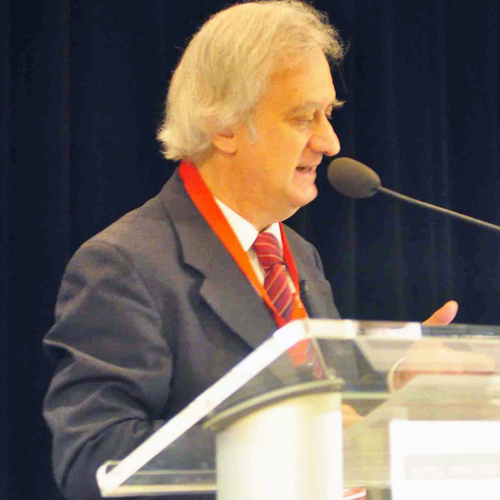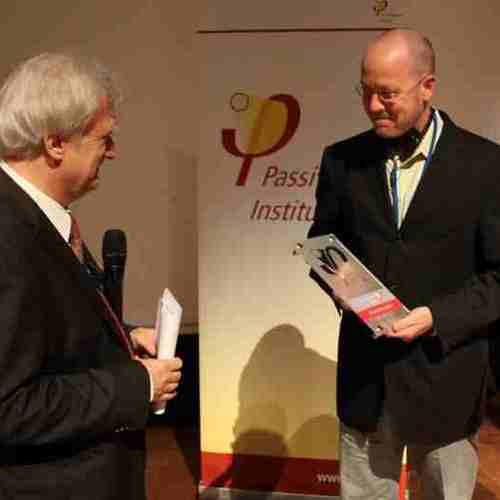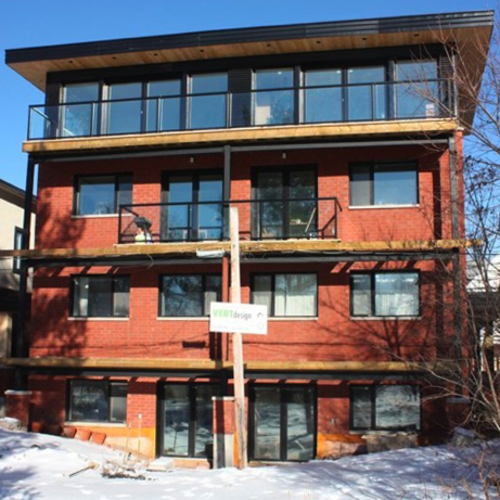A few Green Building Advisor staff members and contributors will attend the “Passivhaus, LEED, and the City of Boston” symposium on Saturday, where Passivhaus Institute founder Dr. Wolfgang Feist will be speaking about “The concept, experience, and dissemination of Passivhaus.”
The folks from GBA hope to ask Dr. Feist and Passive House Institute US founder Katrin Klingenberg a few questions while they’re there; what questions about Passivhaus would you ask if you had the chance? Tell us what you’re curious about and we’ll try to get your questions answered at the symposium.
Weekly Newsletter
Get building science and energy efficiency advice, plus special offers, in your inbox.














33 Comments
Know About Passivhaus?
necessary changes for mixed humid climates...
regional preformance
Will passive House be releasing climate specific targets.
Passivhaus in the South
I second Mr. Nooncaster's suggestion. Here is Athens, Georgia, it is hot and humid for three months and cold and wet for three months. How does passivhaus address these extremes?
Passivhaus in the gulf south.
I repeat Mr. Nooncaster's suggestion as well. Here on the Gulf of Mexico we deal with heat and year round humidity which makes mild winters feel colder. I read all that I can about passive design but there is almost nothing for my climate.
NY State and federal support
1-What are PH and PHIUS doing to generate both state and federal incentives in favor of PH homeowners and suppliers? Energy Star and LEED certified houses and products are rewarded already while being much less energy efficient.
2-Why this lawsuit from PH consultant against LEED? What is PHIUS' position on this? Why can't LEED and PH work together and complement each other for Zero Energy target?
3-Why not push development of US made PH certified products instead of encouraging the import of German made products such as windows with high transport and energy costs?
4-Why not create the PH decathlon in Washington or ....Albany? Solar panels on the White House may not be enough to generate momentum on energy saving houses...
VeroEnergy
Dr Feist in NYC
Are you also planning to attend the session in NYC tuesday evening at Cooper Union?
under the floors
In a 6000 HDD location like Santa Fe New Mexico, which is typically slab-on-grade construction, what is most cost effective: Ridiculous amounts of under slab rigid insulation or well-insulated joists over a crawls space?
Retrofitting to Passivhaus standards
I know of a few retrofits to Passivhaus standards in California. Based on region, have there been any cost/benefit studies done in this area for remodelers/rebuilders?
LEED, products
@Veronique Why this lawsuit against LEED? --- I don't know who this guy is and I don't know the position of PHIUS - but I certainly know my own position on this: Passive House is all about creating practical solutions and not about disputing whatever positions. I will certainly not be involved in such disputes.
Why not push development of US made PH certified products? --- This is what I recommend; and why not work together with those guys who made the development in Europe? You will need different types of windows, ventilation accessories ... in different climates. But the design tools will be (almost) the same.
Response to Dr. Feist
Dr. Feist,
Thanks for responding to our readers' questions. We appreciate it.
Will you have time to sit down with me on Saturday for a short interview? I hope so.
In any case, I look forward to hearing your presentation.
retrofit
How do I retrofit a lower-end tract house built in 1987 (W exposure)? Where do I begin? North-Central Texas, meaning at least 5 months of extreme heat and subject to radical temperature changes and less rainfall each year. How can I retrofit in a cost effective manner?
Thanks to the PH Institute
I took great inspiration from the PH concept and incorporated the concepts into a new home design in Albuquerque NM: R-48 walls, R-60 ceiling, insulated crawl space, forced air heating, refrigeration, IAQ systems. I'm excited to monitor the home's perfomance. The home is presently 'weathered in' and almost ready for sheetrock.
passivhaus in 6000HDD location
wrapping up modeling on PH project here in the NW . when transported (via PHPP) to both provo and santa fe, our space heating numbers actually improve. we have just 4" of EPS under slab. far from 'ridiculous'.
How do we help clients to
How do we help clients to understand PassivHaus as a meanstream program and something that they can consider in addition to or instead of LEED: How many PassivHaus buildings are there worldwide? In the US?
Thanks
lawsuit
What is the connection between any part of PH and a lawsuit against LEED or is it just an angry individual?
PH versus Passive Solar
There's still a lot of confusion about the differences between passive solar design and the principles of Passive House design--even among professionals, who should know better despite the similarities between the names. It might be helpful to clarify the differences between the two approaches to design and construction.
Response to Dave
Dave,
As far as I know, Veronique LeBblanc is mistaken -- there is no connection between Henry Gifford's litigation against USGBC / LEED and the Passivhaus standard.
Passive House
Ask him when they will develop a more "user-friendly" energy model to assist in promoting their certification process?
On a broader / cultural
On a broader / cultural level:
What are some of the major differences Dr. Feist is seeing in the ways North American designers and builders are approaching the PH standard that differ from the Central European approach?
What are some of his favorite aspects of working with North American builders / designers?
What have been some of the changes in European construction culture that the PH experience has brought about over there?
In his opinion, which climate zone is the most technically difficult place to build a low-energy building? Easiest?
Jesse Thompson
Kaplan Thompson Architects
Jesse Thompson - Kaplan Thompson Architects
As a member of the Green building team at the UCC church in Bath Maine I was pleased that you are actively involved with the PassivHaus concepts. Sometime in what remains of this year, I'd like to invite you to a public session some evening or weekend afternoon. Leave room for a Q&A session.
One of my problems has been how to simply demonstrate or validate the theoretical possibilities of energy conservation measures.
Passive House
It should be mentioned that the Passive House annual conference is coming up the first week of November in Portland, Oregon. Dr. Feist and Amory Lovins will be presenting.
http://www.passivehouse.us
2 Things
1) I saw a graph at a Passivhaus presentation which was purported to show a cost optimization analysis (the graph was in German). The way I understood it was that the Passivhaus requirement of heating allocation (15 W/m2yr) was determined to be the point where the convention mechanical systems for heating could be eliminated and that savings could be used for more insulation, higher efficiency windows, etc.
I'm wondering if there is indeed a cost optimization factor behind Passivhaus requirements if that doesn't need to be recalculated for the different climates and market dynamics in the US.
If the cost analysis really isn't part of the reasoning could Dr. Feist explain how the 15 W/m2yr heating allocation and 120 W/m2yr total consumption numbers were decided upon.
2) What is planned for technical and scientific support for PassivHaus designers in the US? What is currently available in Germany?
I've worked on a certified Passivhaus design and put a few other projects into the PHPP. I work for a certified consultant and have gotten far learning the software in the process. The input for the PHPP is extensive and there are some difficult things to model like thermal bridging, inputting non-certified windows and ventilation systems, and other highly specific input like the thermal characteristics of the soil of the site. I think in order to maintain the integrity of designing with the PHPP certified consultants need expert support to answer technical questions as they arise. I don't think after the 9 day training that people understand all aspects of the calculations that the software is doing. I think it is important also to have English translations of the scientific references that abound in the PHPP user manual, or for the use in the US maybe pertinent American institution references are available. I can plug in numbers into the PHPP but I would like to understand the formulas determining how passive solar gains are accounted for for instance.
The PHPP
Oh, one more: Do we really have to call it "The PHPP" over here? :)
PHPP
yes, i always refer to it as PHPP. although "The PHPP" sounds even better - reinforces the foreign beginnings and rough translations.
e.g. ...
i rocked this project in PHPP!
who knew you could get away with non-superinsulated walls in the northwest - thanks PHPP!
the 9 day training session wasn't as good as i'd hoped, especially for the cost. also, a lot of time was spent going over excel basics, which could have been better utilized elsewhere (LCA, economic issues, etc)
Thanks to everyone
Thanks for all your questions. I'm off to Boston -- we'll see if it's possible to get some of these questions answered.
PH in Hot, Humid Climates
I am sure Dr. Feist will endeavor all questions, but there are a couple pieces of background information I'd like to offer:
1) A Passive House in Lafayette, Louisiana: https://www.greenbuildingadvisor.com/blogs/dept/green-building-news/following-passive-house-deep-south
2) "Passive Houses in Mediterranean Climates" by the PHI: http://www.passivhaustagung.de/Passive_House_E/PH_MedClim.html
Am I mistaken or is Henry Gifford listed as a PH consultant?
1) This is what is listed on PHIUS website for PH consultants in NY state:
Passive House Institute US
Architecture & Energy, Inc.
Design
http://www.energysavingscience.com
http://www.henrygifford.com
[email protected]
212-662-2768
2) we contacted Henry Gifford and he was not interested in consulting on a project combining LEED and PH certifications.
I believe this is implying some connection with PH whether PHIUS agrees with his initiative or not, no? I find it confusing...
Thank you Dr Feist
Thank you for your answers to my questions. I can't wait for Martin's report from Boston: this is really fascinating and so useful for our project!
I am coming to listen to you at Cooper Union in NYC tuesday night and would like to know if you could explain what you mean by "affordable" in PH definition and if you could give examples from Europe of prices per sqft (sorry m2!) and comparisons to standard construction prices.
There is too often a tendency from the local industry of trying to "bank" on green. I find it unethical and missing the point: if green is not affordable, it won't happen. Full stop.
Europe has happened because strict laws and building codes made it happen since 1974: the laws were created because of the European lack of natural energy resources and a strong wish to not depend more from oil producing countries. The US public is very reluctant to laws, so people here will have to be seduced by the notion of efficiency in economical terms, not just energy terms.
Only a handful of US professionals are advocating an economically efficient approach, competitive with standard construction. We need your help to send the message that this is achievable, it works in Europe and that the Habitat for Humanity initiative to roll with PH standards from now on, is a great beginning.
But, on this economical matter, I need to ask you if you are not a bit worried that few PH owners are looking into certification? Is it the cost or the complexity of the certifiction that is at stake?
Passivhaus consultants
Veronique,
As far as I know, anyone who wants to can sign up to take the training course on PHPP or to become a Passivhaus consultant. However, just because someone has done that, doesn't mean that their future actions are endorsed by the Passive House Institute U.S.
PH vs LEED
Martin,
I understand your point but I believe this requires further clarification from PHIUS regarding their position vis a vis LEED and whether they find it conflicts with PH or just complements it.
I personally think the PH/LEED combo is a great path to Zero Energy because if you do not cheat on it, LEED addresses also the non-energy environmental aspect of a house. However, before I fully embark on that strategy for my project, I would like to know what the experts believe.
PH v LEED
they're two different rating systems. there is no reason for the iPHA or PHIUS to 'step in it' or provide clarification. gifford isn't representing PH, he just happens to be a PH consultant who is justifiably concerned about LEED's ginormous shortcomings.
LEED and PH can work hand in hand (there are a handful of LEED and PH certified houses)
or you can just obtain PH certification and be comfortable in the fact that the energy savings from your PH outperform 98,3% of LEED projects.
LEED can achieve net zero, and PH can achieve net zero. there are additional methods of achieving net zero, and they don't require allegiance to any rating system.
from our experiences, the folks interested in PH were already heavily invested in LEED, and were looking for something a little more challenging and more effective.
PH & LEED
Veronique, we haven't run into any conflicts between LEED and Passivhaus in our projects.
My sense is that many of LEED goals are law in Europe (not prizes for good behavior), it's not like Passivhaus buildings didn't have to deal with stringent building siting and material toxicity requirements when the system was being developed.
There are some minor issues with ASHRAE (which LEED uses as a ventilation and exhaust design prerequisite) and trying to use a recirculating range hood and an HRV in an open plan design the way some PH designers prefer, but that's a design inflicted problem, not a Passivhaus conflict.
The interview has been posted
A transcript of my interview with Dr. Feist has been posted. It's here:
A Conversation With Wolfgang Feist
Log in or create an account to post a comment.
Sign up Log in